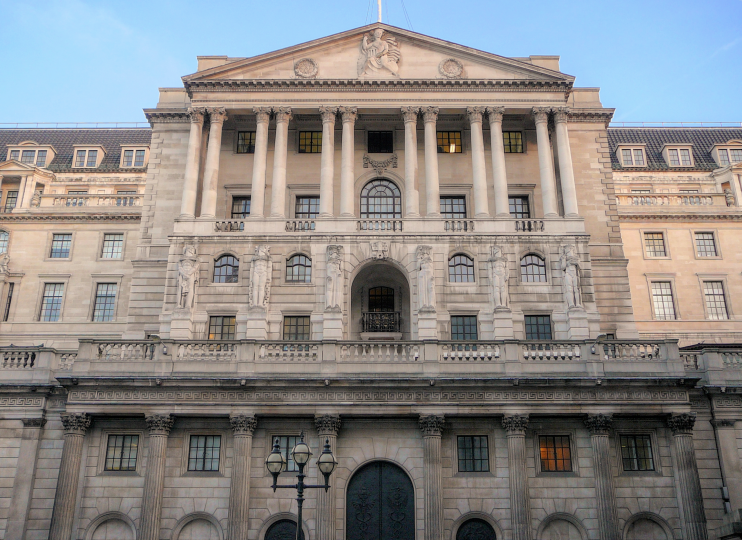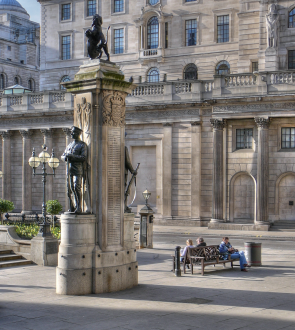Bank
Bank, City of London
The central bank of the United Kingdom, located at the heart of the ‘square mile’ that constitutes London’s prime financial district

The Bank of England began in 1694 as a commercial operation providing funds for a war against France. At first the bank operated out of Mercers’ Hall and then Grocers’ Hall before acquiring its governor’s mansion on Threadneedle Street as the site for its own premises in 1724.
Threadneedle Street’s name probably relates to the street’s early role as a centre of the tailoring trade; the Merchant Taylors’ Company’s hall has been here since the 14th century. However, contrary to a much-repeated fallacy, neither a thread nor a needle appear in the Merchant Taylors’ coat of arms. The name first appears in 1598 as Three Needle Street and if this spelling is reliable there may be a link with the arms of the Needlemakers’ Company, in which three needles appear, or with a signboard depicting three needles that hung outside the Merchant Taylors’ hall. Threadneedle Street seems previously to have been called Broad Street, forming part of what is now Old Broad Street.
By the end of the 18th century the Bank of England had become such a venerable institution that the dramatist Sheridan dubbed it ‘the Old Lady of Threadneedle Street’.
Gradually it became the dominant issuer of notes and the chosen bank of most departments of state but it was not until the 19th century that the Bank of England fully acquired its present national role.

To the untrained eye, the bank’s present headquarters appear to be an architecturally harmonious achievement but the building is actually the product of several controversial stages of construction, extension and reconstruction.
George Sampson set the Palladian tone, Sir Robert Taylor oversaw enlargement to the east and west boundaries at Bartholomew Lane and Prince’s Street, and Sir John Soane expanded the bank northwards to Lothbury and created magnificent banking halls.
Between the two world wars the bank was further enlarged in the only direction left: upwards. This project necessitated the reconstruction of most of Soane’s interiors, although attempts were made to retain the character of the original halls. A statue of Ariel was added atop the dome at Tivoli Corner.
Nowadays, the bank’s primary responsibilities are setting interest rates, issuing banknotes and striving to maintain a stable financial system.
The Bank of England Museum traces the institution’s history and displays a collection of ingots, coins and banknotes.
The present Bank station is an amalgamation of City station, which operated the ‘drain’ service to Waterloo from 1898, and Bank, which was opened by the City and South London Railway Company in 1900 and became the eastern terminus of the Central London Railway later that year. The station has been nicknamed ‘the worm’ for its twisting network of pedestrian tunnels interconnecting its platforms and those at Monument.
